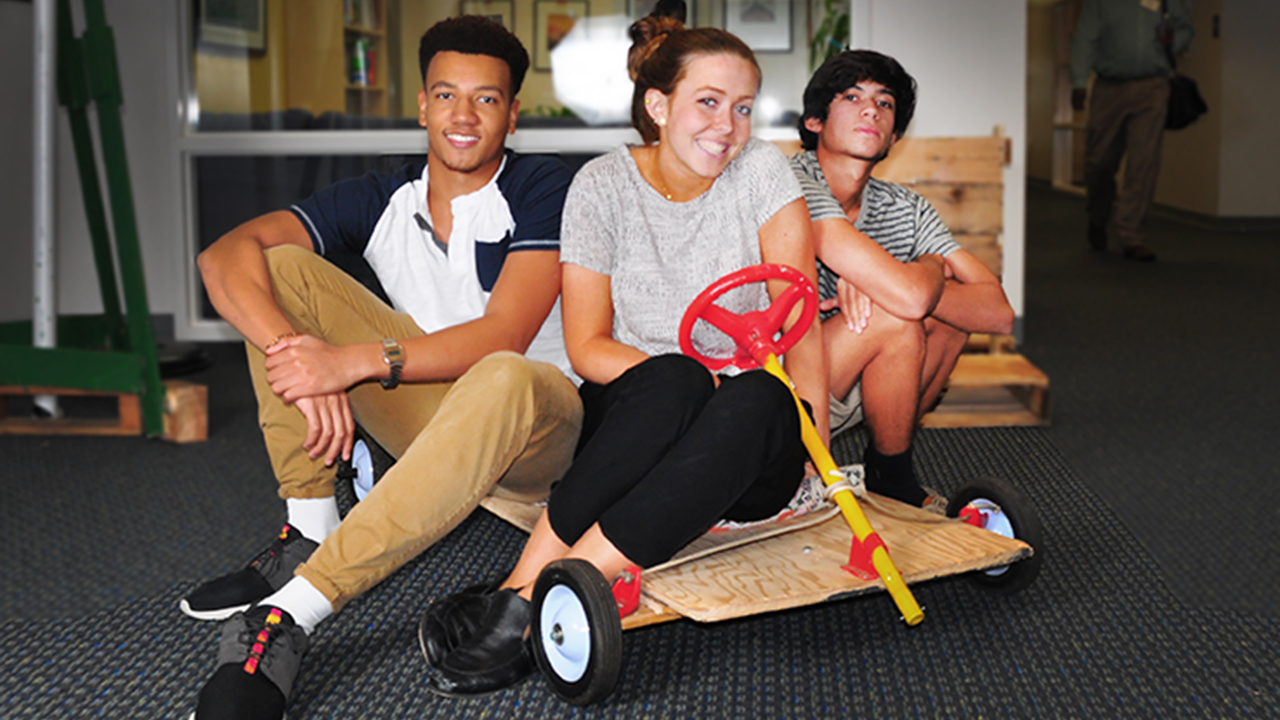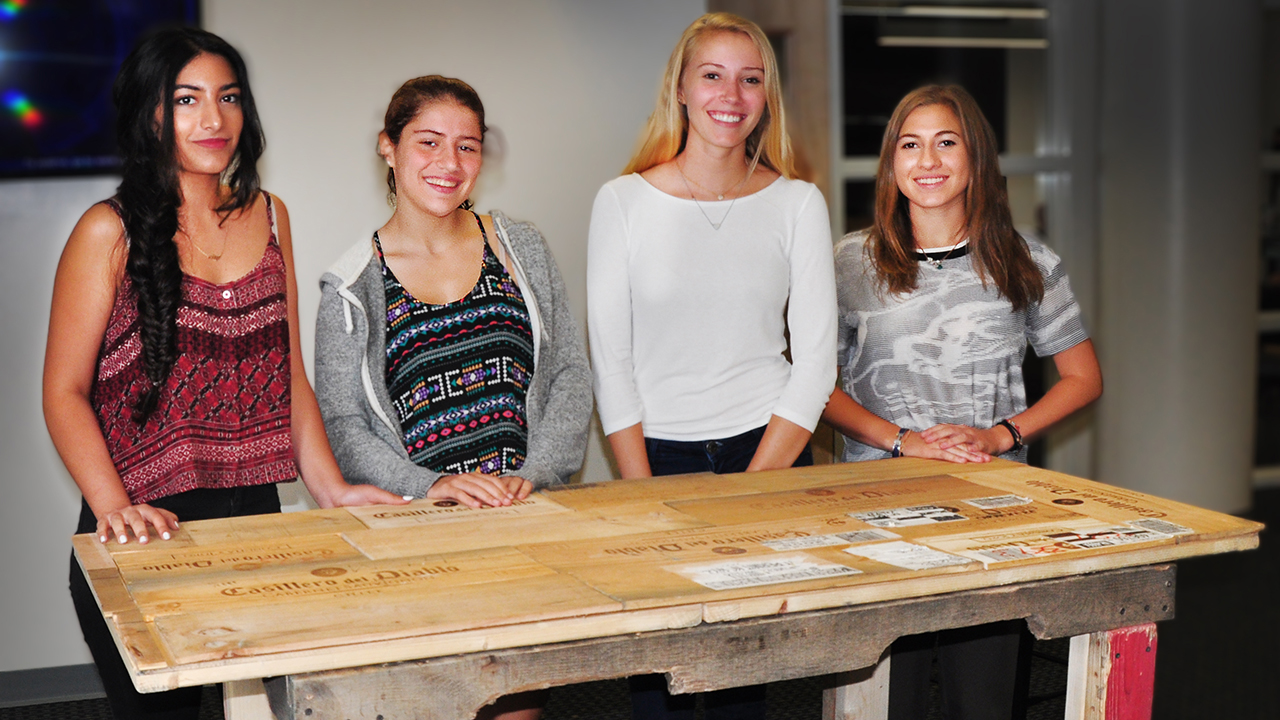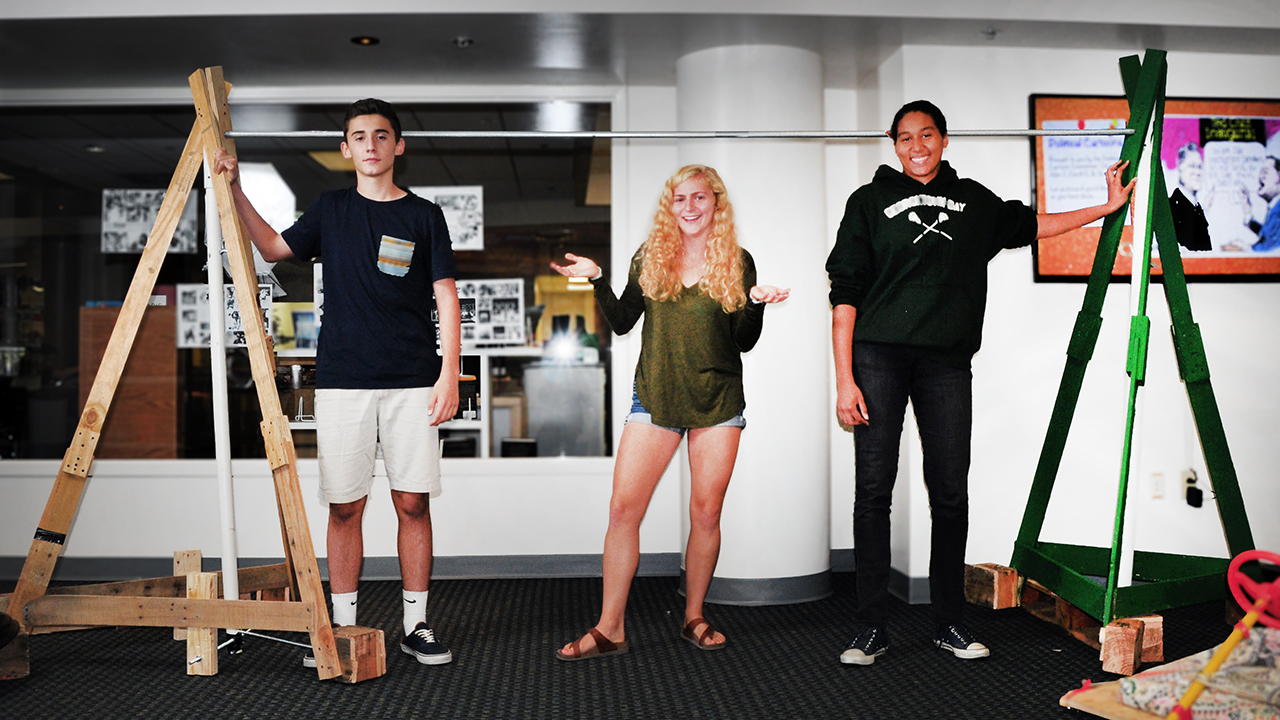I’ve been in education a quarter of a century now, so I’ve had my share of sleepless nights. Many of them came during my early years, when anxiety about teaching the next day was paralyzing. Some came later, when a particular class or test did not go so well or a student was not achieving on a level that I felt she or he could. As a coach, the night before a game has always meant rehearsing scenarios and strategies, falling to sleep amidst a sea of X’s and O’s. Most recently, in my role as dean of students, occasionally I find myself worrying into the early hours about a particular student or family.
This fall, however, my occasional insomnia has taken a new form. Excitement about the next day’s adventure in Play, Passion, and Purpose, a brand new elective that I am teaching with four of my colleagues from four different departments—Will Ley (performing arts), Catherine Pearson (history and service learning), Yka deCastillo (Spanish), and Matt Eddy (science)—has got me bouncing off the walls well into the night. Not that we teachers at GDS aren’t all excited about every course (and every class) we teach, but what’s happening now feels different.
You see, I know how to teach history and psychology; I can lead a discussion about ethics or lecture on neurotransmitters; I can assign a five-paragraph essay; I can write tests and quizzes and even grade them. But teaching an experiential, hands-on course in design thinking—a course that puts students in the lead, where they are producers rather than consumers—well it’s not just refreshing, it feels revolutionary. And it’s giving me a whole new perspective on education, on how kids learn, and on how much fun teaching and learning can be when students take the lead.
The kids have done all kinds of cool things already. They’ve built towers out of uncooked spaghetti; pried apart wooden pallets and built furniture, a hammock, a sled that also functions as a bench, and even a go-cart; they’ve designed and prototyped wallets for their partners; most recently they have gone on “GDS Safari,” exploring the High School environs, seeking opportunities to improve the student experience.
Throughout the various projects they are using a problem-solving model borrowed from Stanford’s d.school that emphasizes empathy and prototyping throughout the design process. The model, with its “bias toward action,” has our students working with their hands, thinking and expressing themselves in images (in addition to words), and, perhaps most importantly—especially in our high-pressured world that seems to demand perpetual perfection—learning the benefits of failure. Instead of holding on to a particular product or plan until it is absolutely flawless, they are learning to get it into the hands (and heads) of a user as early as possible, so that it is the users’ experience that helps point the way forward.
Honestly, I can’t think of a better way to teach empathy, to encourage creativity and innovation, or to broaden our students’ academic experience. It’s so exciting, in fact, that it’s keeping me up at night…
Students Also Aren’t Sleeping!
“I’m learning a lot about the importance of collaboration through hands-on projects. Instead of spending time talking about what we should do, we have been encouraged to start working—to do—and it has been very beneficial.”
“‘Yes and’ not ‘yeah but’—Don’t find a problem and complain about it – design a solution and fix it!”
“This class allows me to explore alternative solutions that I probably wouldn’t have otherwise.”




